Kenichi Yokono, Engraving the Everyday
These red engravings tell a story of oppositions, contrasts, and confrontations between eras, cultures, and sensibilities.
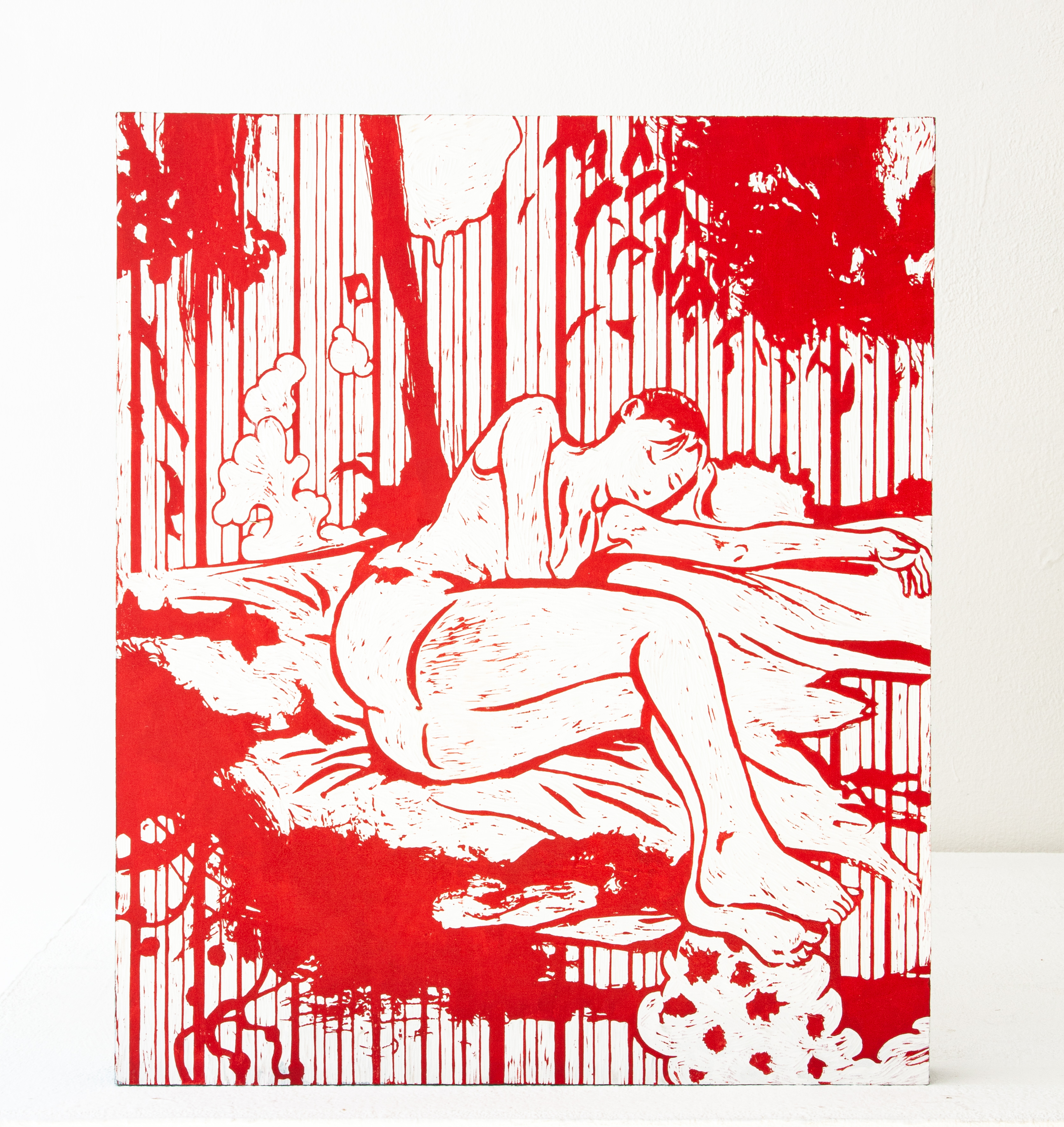
Kenichi Yokono, “Sleeping”, 2019
Initially inspired by motifs from modern Japanese manga culture, anime, or horror films, Kenichi Yokono decided to work using a traditional technique, wood engraving, but without executing the final printing phase. His body of work now focuses more on everyday, neutral scenes.
The Kanazawa-based artist’s compositions reveal a mix of symbols and codes that the viewer needs to take the time to decipher. Cultural stereotypes are connected to these symbols and codes in an unusual way, and the sugary pop imagery specific to Japanese society is drowned in a red universe, which was long tinged with symbols of blood, violence, and cruelty, before gradually tending towards representations that could be described as expressionist. The artist, born in 1972, explains to Pen: ‘I want to be cheerful.’ He achieves this in a counterintuitive manner: ‘I try to be positive while dealing with motifs that sometimes remind me of death. This is because I believe that having a dark essence makes everyday life more positive.’
Metaphorical
The use of red is also a key marker of the artist’s work. This choice leads the viewer to wonder about the dark side of his pieces, which, at first glance, might appear innocent and candid. ‘Red is my favourite colour. […] And red is beautiful and powerful. I feel that it is the colour of blood and represents life force’, Kenichi Yokono continues.
Having long produced work characterised by a combination of kawaii culture and an American punk rock sensibility, seeking to highlight the contradictions inherent in the Japanese cultural environment, Kenichi Yokono changed course in a new cycle of pieces, produced as part of a collaboration with Micheko Galerie (Munich, Singapore). He decided to depict markers of the everyday, the most banal symbols of urban life, with a calmer approach, presenting indoor scenes and pastimes.
‘There are two types of stories: those that are imagined from reality and those that are fantastical, such as other worlds, but for me, everyday life is definitely the starting point. I think it is because I imagine things from my immediate surroundings that I am able give the viewer more freedom to interpret. If we are talking about allegory, then I think all paintings are metaphors. Pop art and horror movies are a part of my daily life, and I think they are very useful.’
With regard to the evolution of his work, his gallery manager Michele Vitucci explains, ‘the new works are more three-dimensional. This is achieved by adding a frame to his woodcut panels. One particular work is an outdoor tea ceremony set, where Yokono has ventured into ceramic making by creating the tea bowls.’
The artist’s work can be viewed on the Micheko Galerie website.
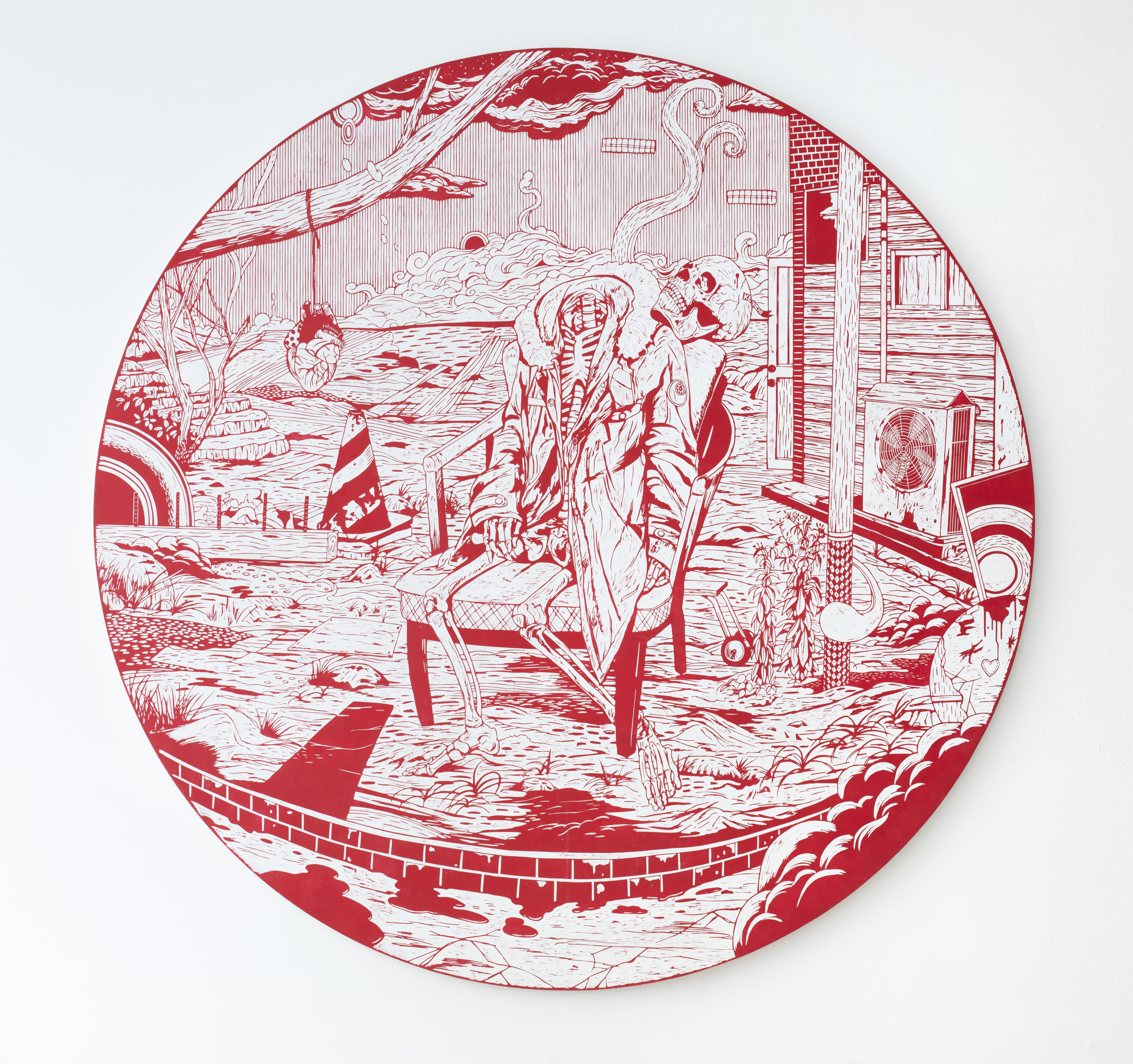
Kenichi Yokono, 'Waiting for the New World', 2013
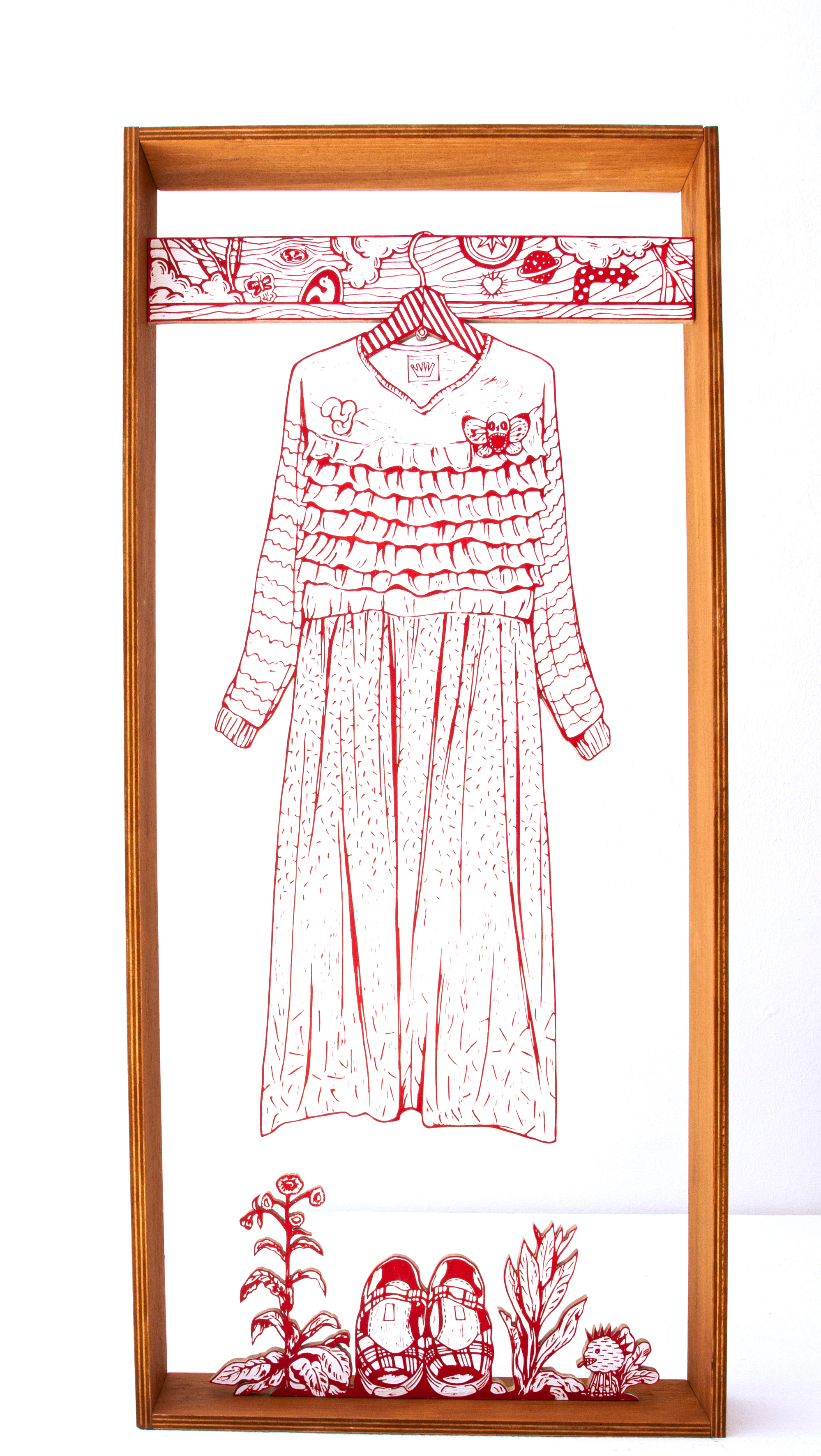
Kenichi Yokono, 'One-piece dress', 2019
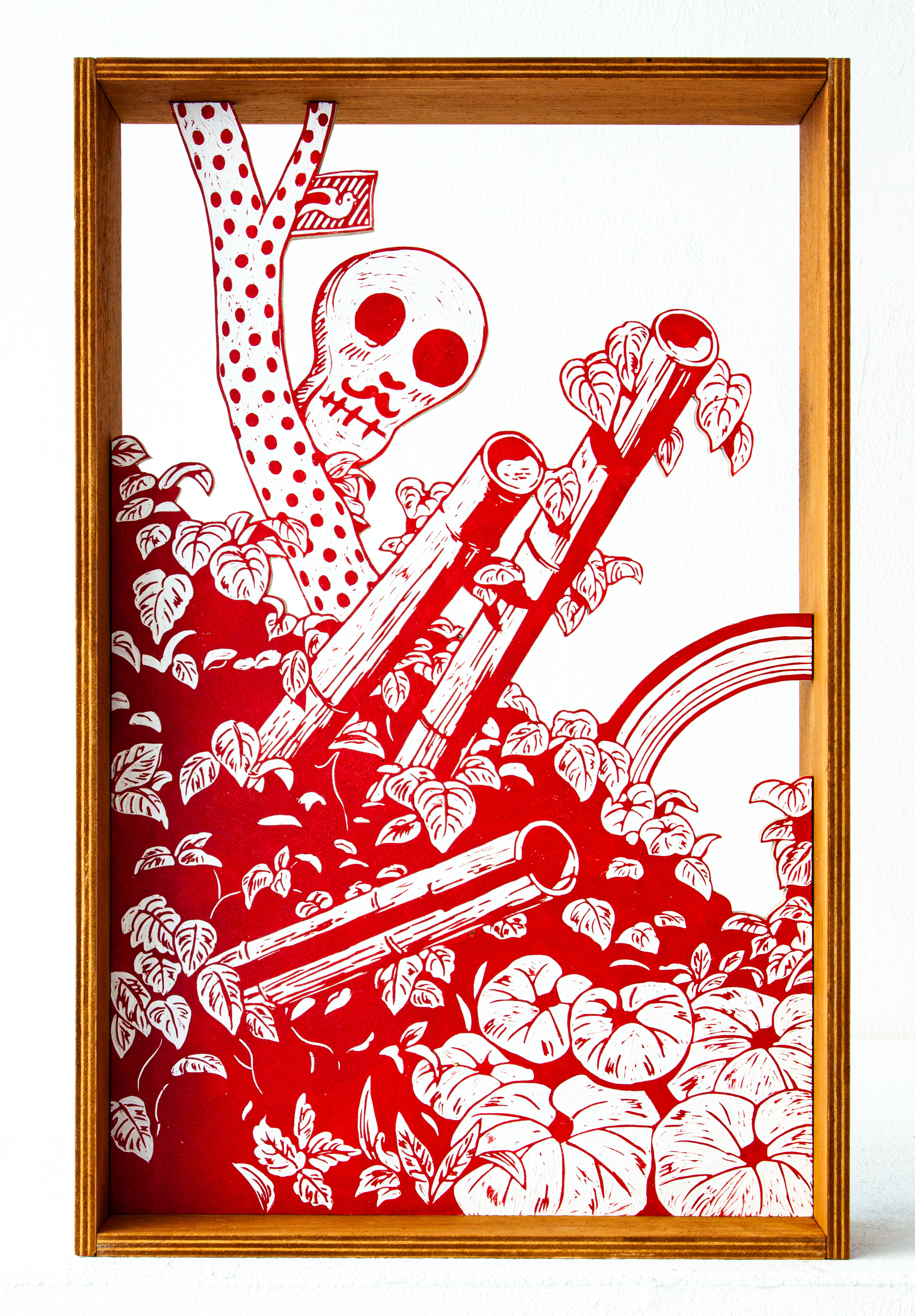
Kenichi Yokono, 'Bamboos', 2019
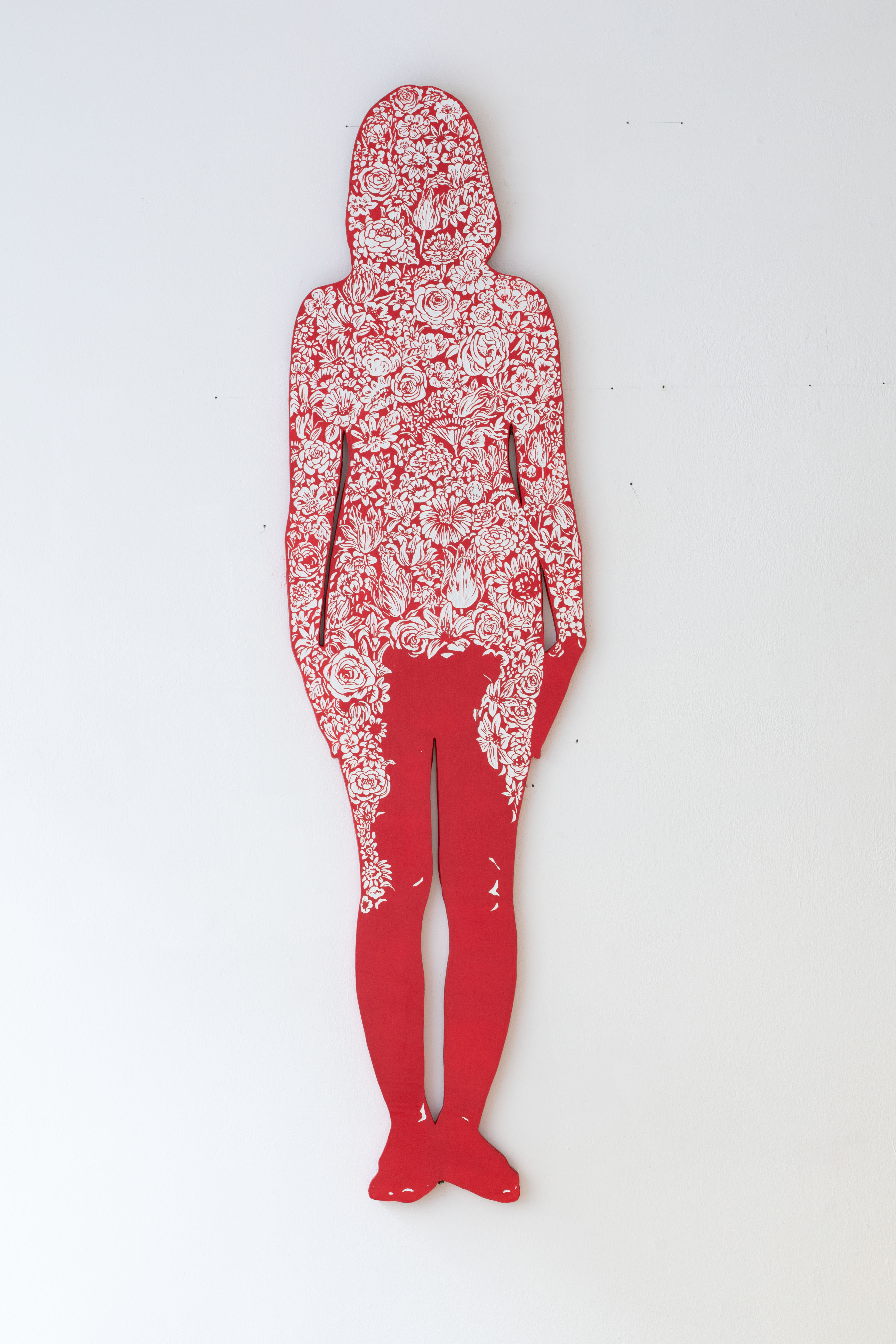
Kenichi Yokono, 'Silhouette of Flowers'
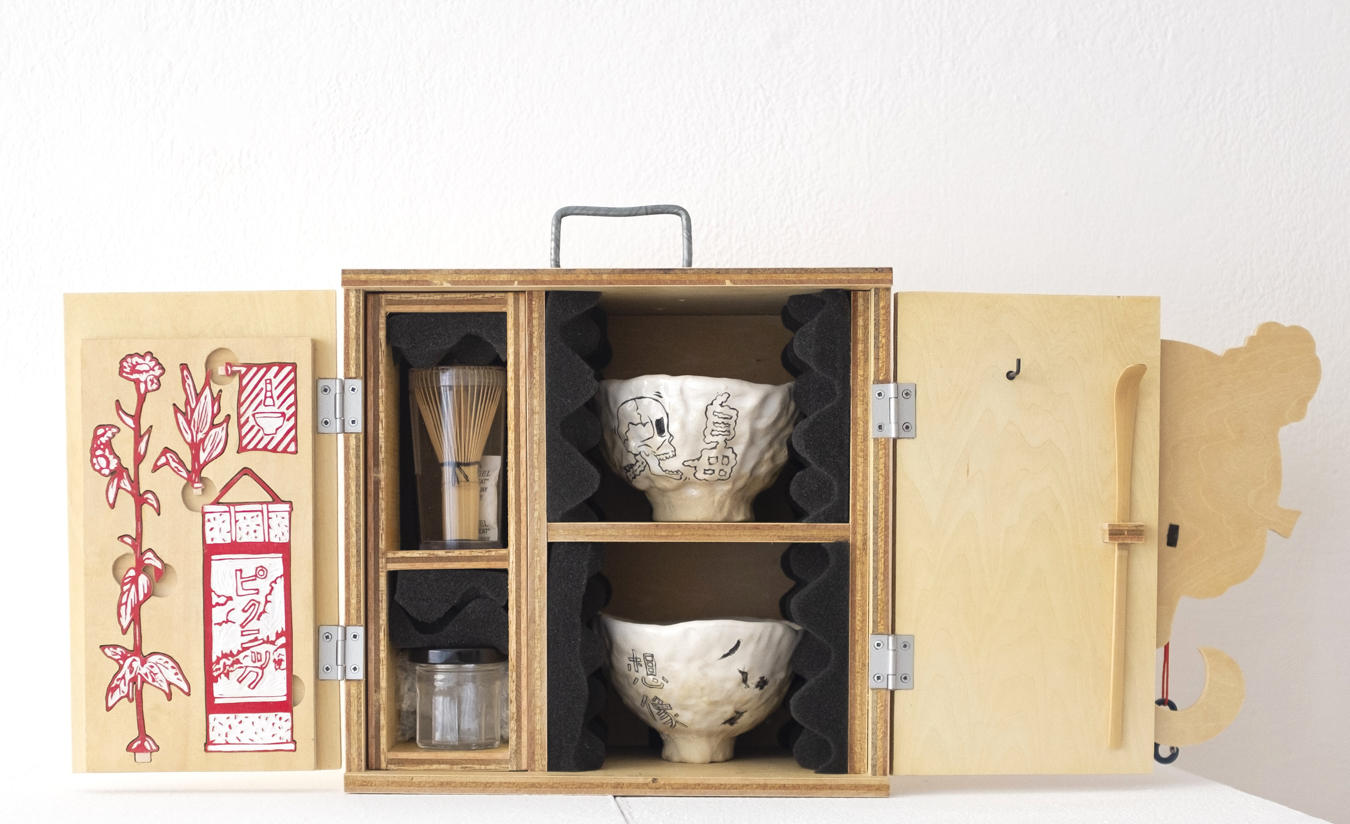
Kenichi Yokono, 'Tea for two'
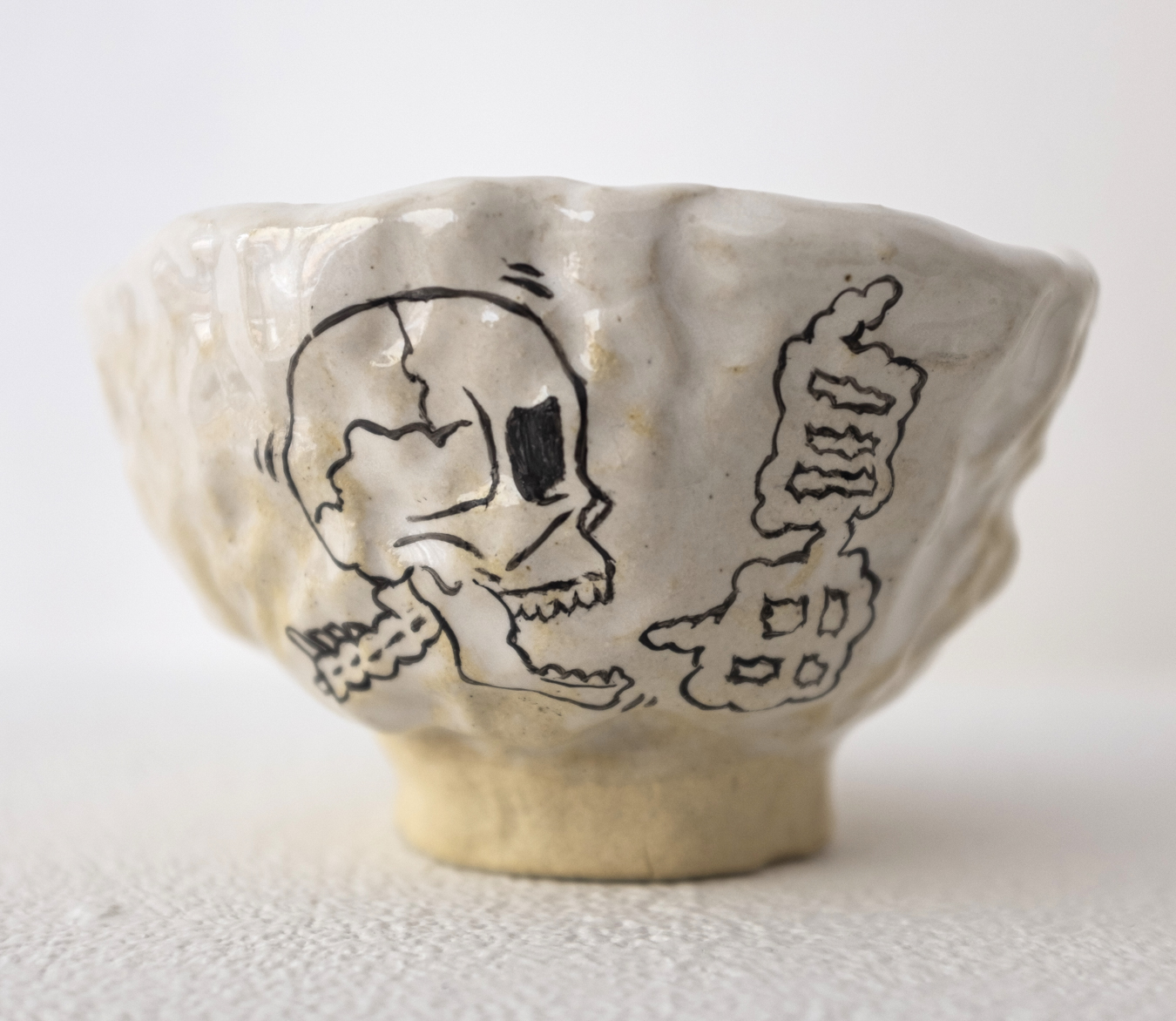
Kenichi Yokono, 'Tea for two'
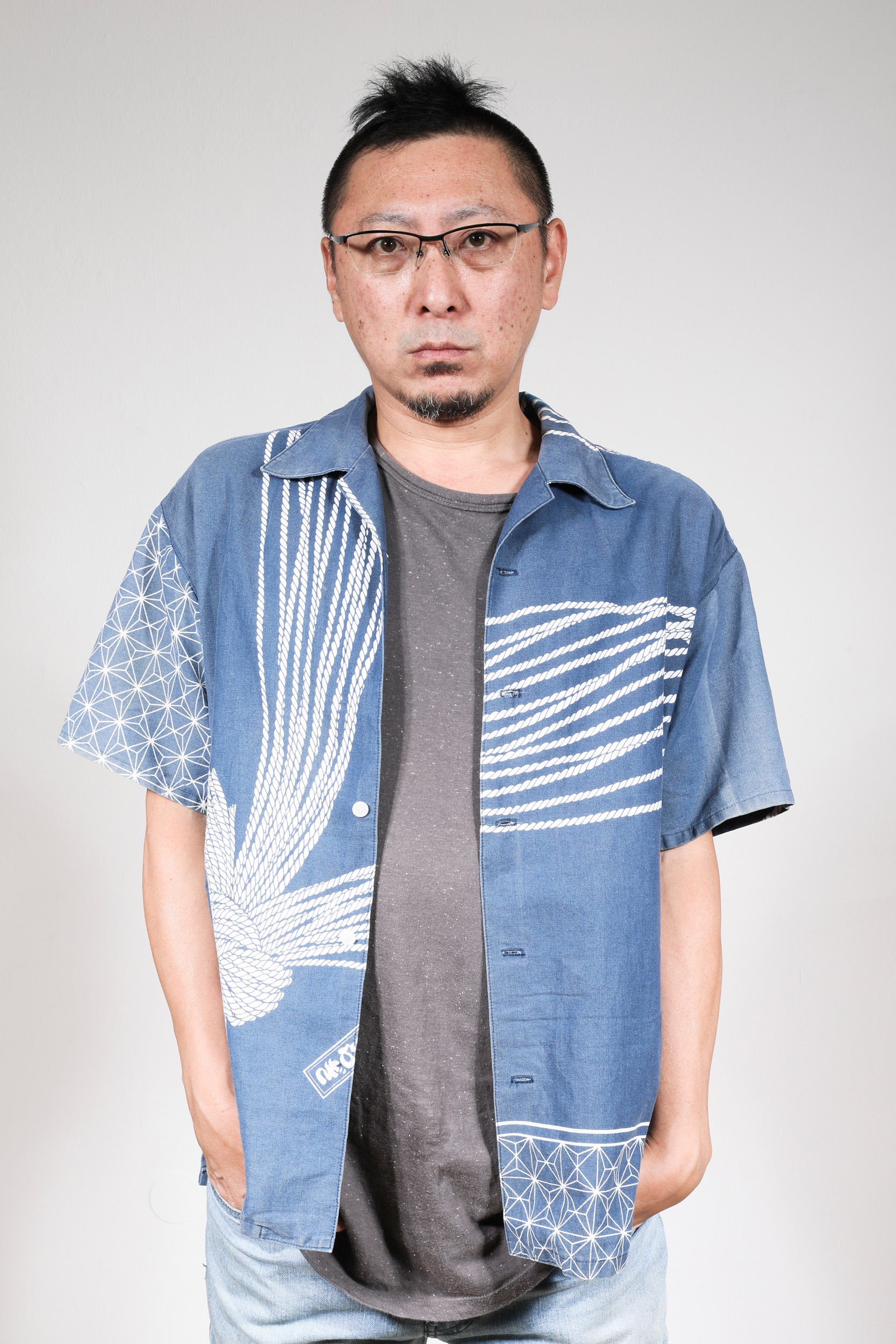
Portrait by Thomas Kalak
TRENDING
-
The Tattoos that Marked the Criminals of the Edo Period
Traditional tattoos were strong signifiers; murderers had head tattoos, while theft might result in an arm tattoo.

-
The Story of Sada Yacco, the Geisha who Bewitched Europe
Described by Dazed magazine as the first beauty influencer, she has been restored to her former glory since 2019.

-
Chiharu Shiota, Red Threads of the Soul
Last year, more than 660,000 people visited the retrospective 'Chiharu Shiota: The Soul Trembles' exhibit at the Mori Art Museum.

-
Japanese Left-field Pop From The CD Age, 1989-1996
‘Heisei No Oto’, a compilation of hidden gems in the unspoken depths of Japanese pop, reveal blissful moment of technological possibility.

-
‘Shojo Tsubaki’, A Freakshow
Underground manga artist Suehiro Maruo’s infamous masterpiece canonised a historical fascination towards the erotic-grotesque genre.





